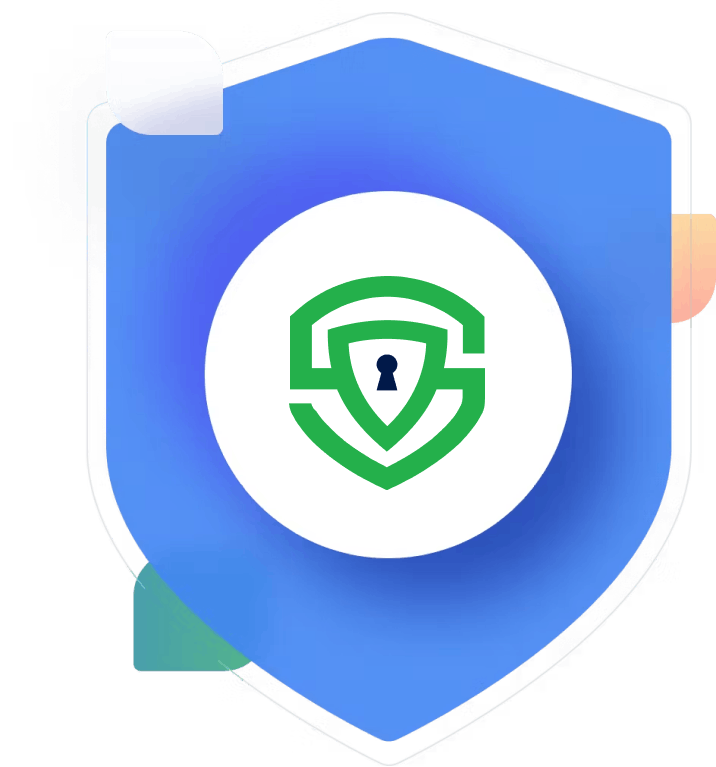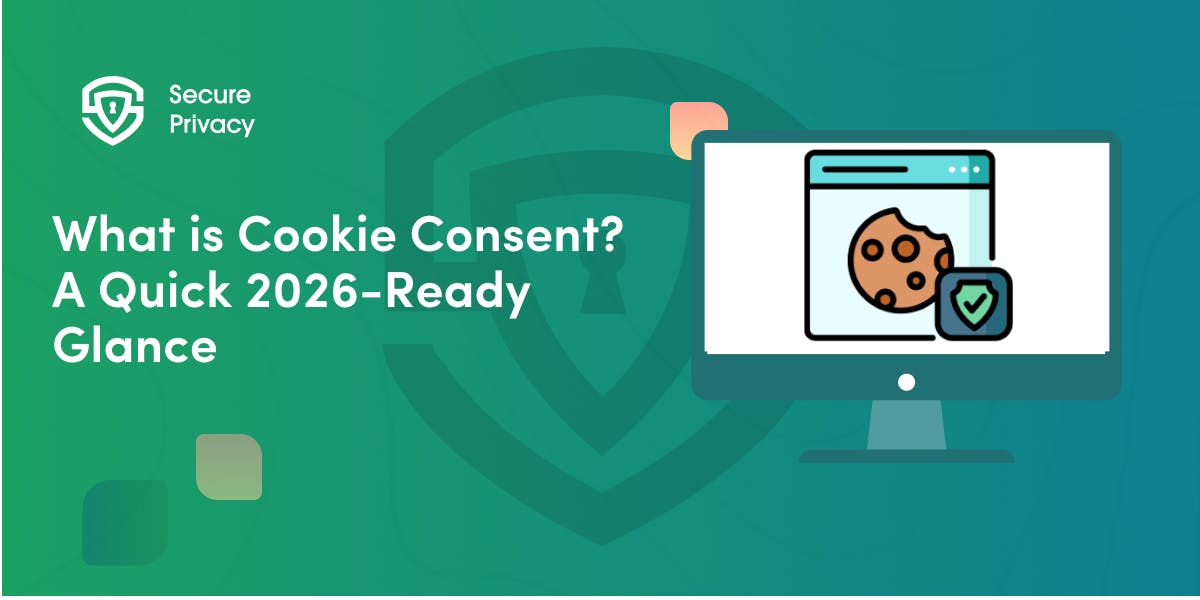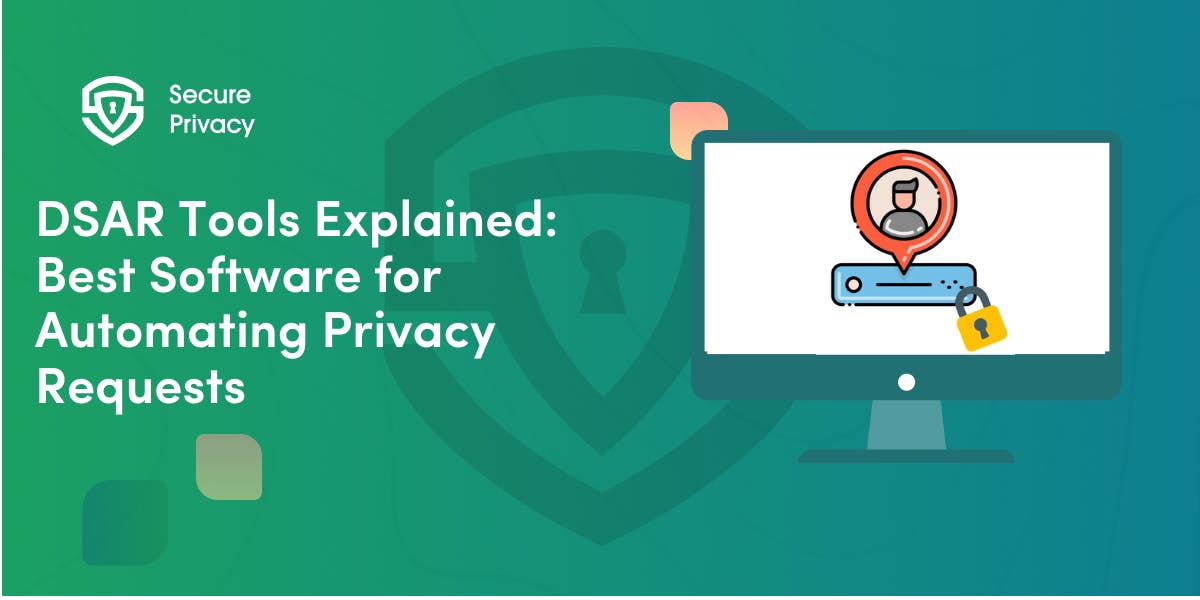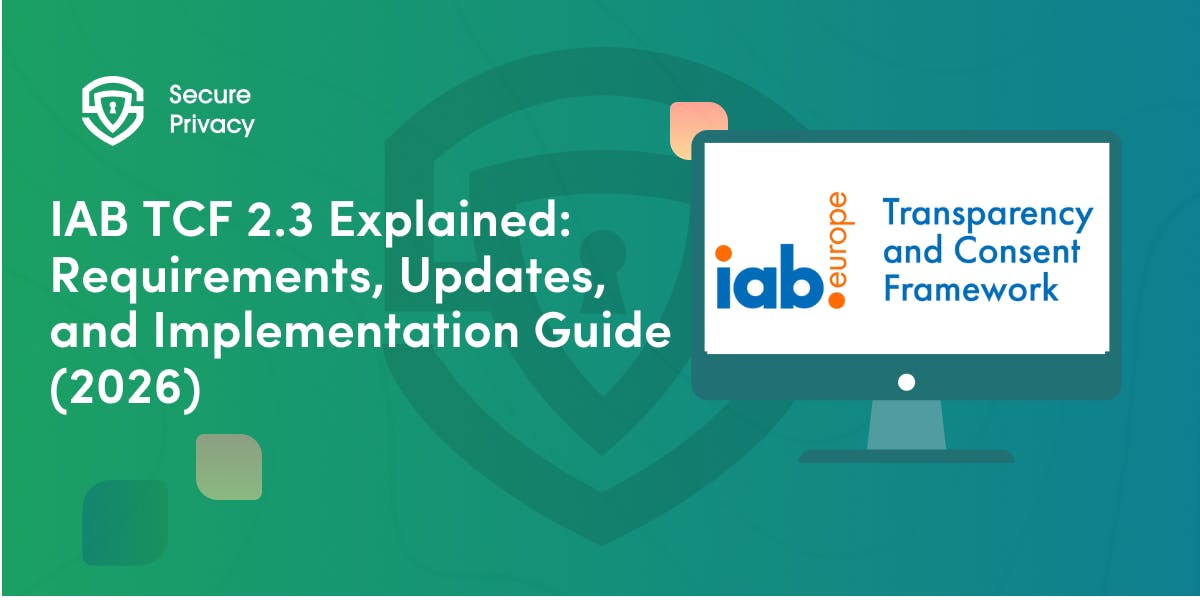Automated RoPA for Schools: Simplifying GDPR Compliance in Education
Your school is drowning in spreadsheets tracking student data across dozens of systems while struggling to demonstrate GDPR compliance to increasingly vigilant regulators. Manual Records of Processing Activities maintenance consume valuable staff time, create compliance gaps, and leave your institution vulnerable to privacy violations that could result in significant fines and reputational damage.
Automated RoPA for schools transforms complex GDPR Article 30 compliance into streamlined, continuously updated records that provide real-time visibility into student data processing activities while reducing administrative burden and ensuring regulatory readiness.
Modern educational institutions process vast amounts of sensitive student information across learning management systems, assessment platforms, communication tools, and administrative software. This complex data landscape makes manual compliance tracking increasingly unsustainable while automated solutions provide the comprehensive oversight and documentation capabilities schools need to protect student privacy and demonstrate regulatory compliance.

Prioritizing user privacy is essential. Secure Privacy's free Privacy by Design Checklist helps you integrate privacy considerations into your development and data management processes.
What is RoPA and Why It Matters for Schools
Records of Processing Activities (RoPA) represent mandatory documentation requirements under GDPR Article 30 that educational institutions must maintain to demonstrate compliance with data protection regulations. Schools operating as public authorities under UK GDPR face legal obligations to document all personal data processing activities involving students, staff, and parents across their digital infrastructure.
Educational institutions typically process extensive personal data including student academic records, behavioral assessments, special educational needs documentation, parent contact information, staff employment records, and health-related data for safeguarding purposes. Each processing activity requires detailed documentation covering purposes, legal bases, data categories, retention periods, and security measures.
RoPA documentation serves multiple critical functions for schools including regulatory compliance demonstration, privacy risk identification, data subject rights fulfillment, incident response preparation, and vendor oversight management. When parents request information about their child's data processing or regulators conduct inspections, comprehensive RoPA records provide essential evidence of responsible data stewardship.
The complexity increases significantly for multi-academy trusts and school districts managing multiple entities with shared systems, diverse educational technologies, and varying data processing requirements across different age groups and educational programs.
Challenges of Manual RoPA in the Education Sector
Educational institutions face unique challenges maintaining accurate RoPA records through manual processes. Schools typically operate complex technology ecosystems including student information systems, learning management platforms, assessment tools, communication applications, safeguarding systems, and administrative software that process personal data in interconnected ways.
High staff turnover in education creates significant knowledge gaps that compromise RoPA accuracy and completeness. When IT coordinators, data managers, or privacy officers leave, their understanding of data flows and processing activities often leaves with them, creating documentation gaps that are difficult and time-consuming to reconstruct.
Most schools lack dedicated privacy expertise and technical resources necessary for comprehensive data mapping and documentation. Teachers and administrators focused on educational delivery struggle to maintain detailed technical documentation about data processing activities while managing their primary responsibilities.
Manual RoPA maintenance using spreadsheets and documents creates inherent risks including version control issues, inconsistent documentation standards, delayed updates when systems change, incomplete data flow mapping, and inadequate detail for regulatory requirements. These limitations become particularly problematic during regulatory inspections or data subject access requests.
Multi-school organizations face additional complexity coordinating RoPA documentation across multiple entities while ensuring consistency, avoiding duplication, and maintaining appropriate oversight visibility. Manual approaches make centralized management and reporting virtually impossible at scale.
Benefits of Automated RoPA for Schools
Continuous Monitoring and Real-Time Updates
Automated RoPA systems provide continuous monitoring capabilities that manual processes cannot match. These platforms automatically detect when new educational technologies are implemented, existing systems are modified, or data processing activities change, ensuring documentation remains current and accurate without constant manual intervention.
Integration with existing school systems enables automatic discovery of data flows, processing purposes, and technical configurations that would require extensive manual investigation. This continuous monitoring approach eliminates the common problem of outdated documentation that fails to reflect current data processing realities.
Streamlined Multi-Entity Management
School districts and multi-academy trusts benefit from centralized RoPA management that provides unified oversight while maintaining entity-specific documentation. Automated systems support hierarchical organizational structures where district-level administrators can maintain oversight while individual schools manage their specific processing activities.
Role-based access controls ensure appropriate stakeholders can access relevant information while maintaining security and privacy protections. Principals, IT coordinators, data protection officers, and legal advisors can each access information appropriate to their responsibilities without compromising sensitive details.
Enhanced Accuracy and Consistency
Automated systems eliminate human error and inconsistencies that plague manual documentation approaches. Standardized templates, validation rules, and guided workflows ensure comprehensive information capture while maintaining regulatory compliance standards across all processing activities.
Pre-configured education-specific templates understand common school data processing scenarios including student admissions, academic assessment, behavior management, special educational needs support, and parent communication, reducing the burden on school staff while ensuring complete documentation.
Audit-Ready Compliance Reporting
Automated RoPA platforms generate comprehensive compliance reports suitable for regulatory inspections, internal audits, and stakeholder transparency requirements. These reports can be customized for different audiences including school boards, parents, regulators, and vendor assessments.
Real-time compliance monitoring identifies potential gaps or risks before they become regulatory violations, enabling proactive risk management rather than reactive compliance efforts. Automated alerts notify relevant stakeholders when attention is required for specific processing activities or compliance deadlines.
Improved Transparency and Stakeholder Confidence
Comprehensive RoPA documentation enables schools to provide clear, accurate responses to parent inquiries about student data processing. This transparency builds trust with families while demonstrating the school's commitment to responsible data stewardship and privacy protection.
Board members and senior leadership gain visibility into institutional data processing risks and compliance status, enabling informed decision-making about technology investments, vendor relationships, and privacy management strategies.
Key Features to Look for in Automated RoPA Tools for Education
Education-Specific Templates and Workflows
Leading automated RoPA solutions provide pre-configured templates designed specifically for educational contexts. These templates should address common school processing activities including student information management, learning analytics, behavior tracking, special educational needs support, safeguarding procedures, and parent communication systems.
Workflow automation should guide users through comprehensive documentation processes while accommodating the limited privacy expertise typically available in educational settings. Built-in guidance and validation help ensure complete, accurate documentation without requiring extensive technical or legal knowledge.
Multi-Entity District Support
School districts and multi-academy trusts require sophisticated organizational management capabilities supporting centralized oversight with entity-specific customization. The platform should enable policy inheritance, shared vendor management, consolidated reporting, and appropriate access controls reflecting complex educational governance structures.
Integration capabilities should support diverse technology environments including cloud-based systems, on-premises infrastructure, and hybrid deployments commonly found in educational settings. API connectivity ensures seamless data flow without disrupting existing operations.
Data Flow Visualization and Mapping
Advanced visualization capabilities help schools understand complex data flows across their technology ecosystems. Interactive diagrams should illustrate how student data moves between systems, third-party vendors, and external organizations while highlighting potential privacy risks and compliance requirements.
Automated discovery and mapping capabilities reduce the manual effort required to document data flows while ensuring comprehensive coverage of all processing activities. These features prove particularly valuable for schools managing complex EdTech environments with multiple vendors and integration points.
Vendor Management and Third-Party Oversight
Educational institutions rely heavily on third-party vendors for technology services, creating complex data sharing relationships that require careful oversight. Automated RoPA tools should provide centralized vendor management capabilities including contract tracking, data processing agreement monitoring, and compliance status verification.
Integration with vendor assessment workflows helps schools evaluate privacy risks before implementing new technologies while maintaining ongoing oversight of existing vendor relationships. This capability proves essential for demonstrating due diligence in vendor selection and management.
Real-World Implementation Success
A mid-sized school district serving 15,000 students across 25 schools struggled with manual RoPA maintenance using spreadsheets managed by individual IT coordinators. The decentralized approach created inconsistent documentation, missed processing activities, and significant compliance gaps that became apparent during a regulatory inspection.
After implementing an automated RoPA solution specifically designed for education, the district achieved comprehensive documentation coverage within 60 days. The platform automatically discovered processing activities across all schools, standardized documentation formats, and provided centralized oversight capabilities that dramatically improved compliance posture.
The automation enabled the district to respond to parent data subject access requests within hours rather than weeks, demonstrate compliance readiness during subsequent regulatory interactions, and reallocate staff time from manual documentation to strategic privacy initiatives. The investment paid for itself within the first year through improved efficiency and risk reduction.
Most significantly, the district gained confidence in their privacy compliance program and ability to evaluate new educational technologies without compromising student data protection. The automated system continues to provide ongoing monitoring and documentation updates as the district's technology environment evolves.
Choosing the Right Automated RoPA Tool for Schools
Budget and Resource Considerations
Educational institutions face unique budget constraints that require careful evaluation of total cost of ownership including licensing, implementation, training, and ongoing support costs. Leading vendors understand educational budget cycles and often provide flexible pricing models that accommodate public sector procurement requirements.
Consider platforms that offer transparent pricing, educational discounts, and comprehensive support packages that reduce the internal resources required for successful implementation and ongoing operations. The most cost-effective solutions provide rapid return on investment through improved efficiency and reduced compliance risks.
Vendor Transparency and Educational Expertise
Select vendors with demonstrated experience in educational privacy compliance and understanding of school operational requirements. Vendors should provide clear documentation of their own privacy practices, security controls, and compliance capabilities while offering appropriate data processing agreements for educational contexts.
Educational expertise becomes particularly important when evaluating platform capabilities for unique school requirements including safeguarding obligations, special educational needs support, multi-academy trust governance, and integration with specialized educational software.
System Compatibility and Integration
Ensure selected platforms integrate effectively with existing school technology infrastructure including student information systems, learning management platforms, communication tools, and administrative software. Comprehensive integration capabilities reduce implementation complexity while ensuring complete data processing coverage.
Evaluate the vendor's track record with similar educational technology environments and their ability to provide ongoing support as school systems evolve. The most effective solutions grow with institutional needs rather than requiring replacement as requirements change.
How Secure Privacy Delivers Educational Excellence Through Automated Compliance
Educational institutions choose Secure Privacy for comprehensive automated RoPA solutions that understand the unique challenges of protecting student data while enabling innovative educational technology. Our platform combines deep educational domain expertise with robust privacy engineering designed specifically for schools, districts, and multi-academy trusts.
Our automated RoPA solution provides industry-leading education templates covering common school processing activities with pre-configured workflows that guide users through comprehensive documentation without requiring extensive privacy expertise. The platform's multi-entity capabilities support complex educational governance structures while providing the centralized oversight and reporting capabilities administrators need.
Secure Privacy's educational focus ensures seamless integration with popular school management systems, learning platforms, and EdTech vendors while providing the transparency and audit capabilities that build trust with parents, regulators, and stakeholders. Our commitment to educational privacy extends beyond compliance to support institutional missions of student success and community trust.
Transform Your School's Privacy Compliance Today
Automated RoPA solutions represent a fundamental advancement in how educational institutions approach GDPR compliance and student data protection. Schools can no longer afford the risks and inefficiencies of manual documentation approaches when automated solutions provide comprehensive, accurate, and continuously updated compliance capabilities.
The investment in automated compliance solutions delivers immediate returns through reduced administrative burden, improved accuracy, and enhanced ability to demonstrate regulatory compliance. As educational technology adoption accelerates and privacy regulations continue evolving, automated RoPA systems become essential infrastructure for sustainable privacy management.
Educational institutions that implement automated RoPA solutions position themselves for success in an increasingly complex privacy landscape while demonstrating their commitment to responsible student data stewardship and regulatory compliance excellence.
Ready to transform your school's approach to GDPR compliance? Discover how automated RoPA can eliminate manual documentation burdens while ensuring comprehensive student data protection.
Get Started For Free with the
#1 Cookie Consent Platform.
No credit card required

What is Cookie Consent? A Quick 2026-Ready Glance
Your website loads. Cookies track users. But without proper cookie consent, you're violating GDPR — risking fines up to €20 million or 4% of global revenue. Cookie consent is the legally required mechanism by which websites obtain explicit user approval before deploying non-essential tracking technologies. This requirement stems from GDPR Article 4(11) and the ePrivacy Directive, mandating that consent must be freely given, specific, informed, and unambiguous.
- Legal & News

DSAR Tools Explained: Best Software for Automating Privacy Requests
You're drowning in data subject access requests. Manual searches through dozens of systems miss regulatory deadlines and expose organizations to fines starting at $2,500 per violation. The solution? DSAR tools — purpose-built software that automates the entire process of responding to data subject access requests, from intake to delivery.
- Legal & News

IAB TCF 2.3 Explained: Requirements, Updates, and Implementation Guide (2026)
Your ad revenue dropped 40% overnight. Google stopped bidding on your inventory. Your DSP partners flagged your traffic as non-compliant. The culprit? An outdated TCF 2.2 consent string after the February 2026 enforcement deadline.
- Legal & News
- Cookie Consent
